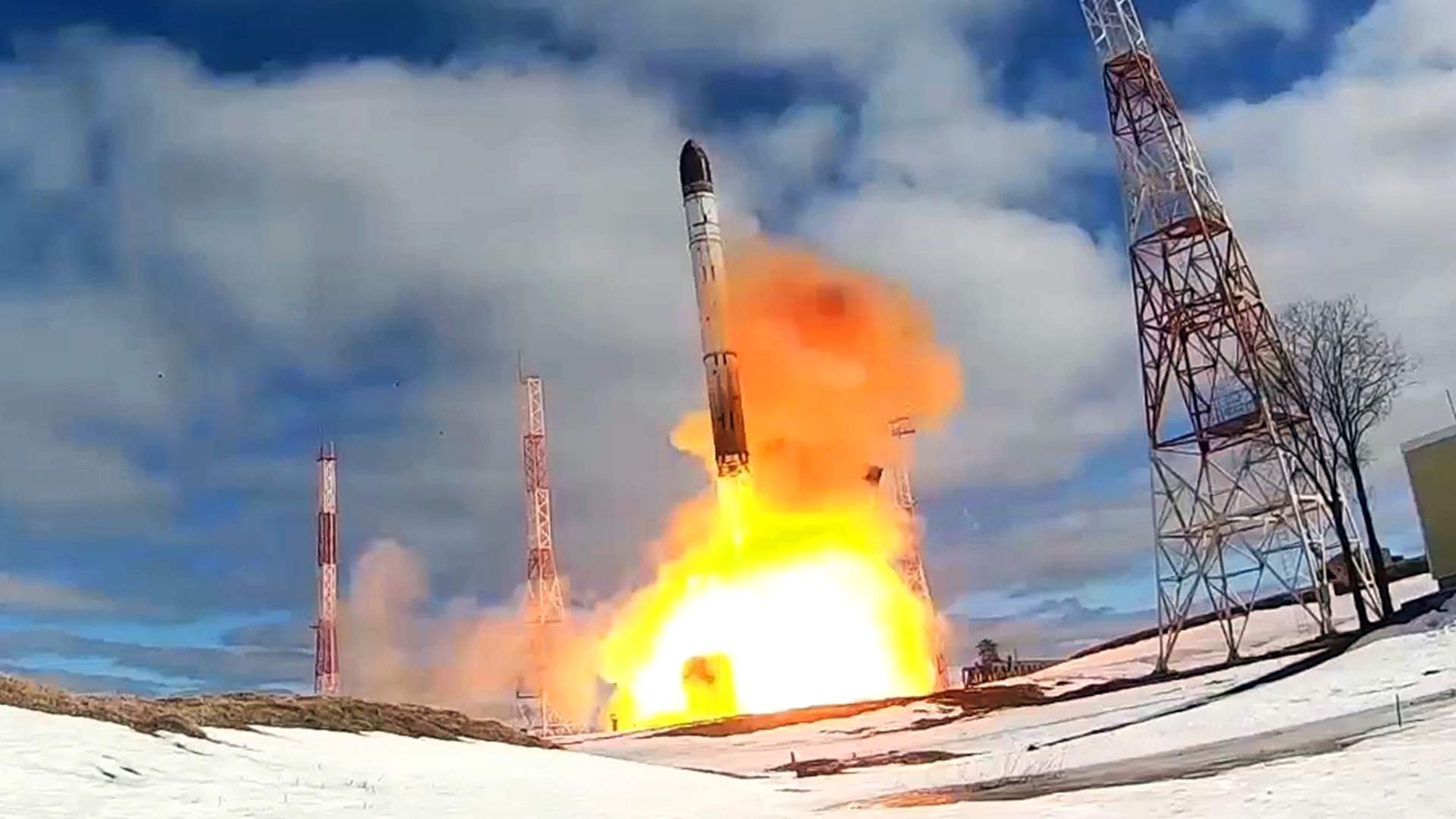What strategic developments are already in service with the Armed Forces of the Russian Federation and what are they capable of
Almost all the latest weapons systems, the development of which the President of Russia announced in 2018, are already serving in the military, the tests of the rest are being completed. In particular, hypersonic missiles "Dagger" and "Zircon" are used in the course of their military operations, "Sarmatians", hypersonic intercontinental blocks "Avangard" and laser complexes "Peresvet" are on combat duty, Vladimir Putin said on February 29 in a message to the Federal Assembly. The Head of State also noted that Russia's strategic nuclear forces (Strategic nuclear forces) are in a state of full combat readiness for guaranteed use. About the capabilities of the latest Russian weapons — in the material of Izvestia.
Six years later
The Russian army has received almost all the weapons, the development of which Vladimir Putin announced in 2018. Six years later, he returned to this issue, and again during his address to the Federal Assembly.
"What we planned in the field of armaments, which I spoke about in the 2018 message, is all done or this work is being completed," the head of state stated.
Thus, the Dagger hypersonic aviation complex has not only been put into service, but is also being used with high efficiency to defeat particularly important targets during a special military operation, the president said.
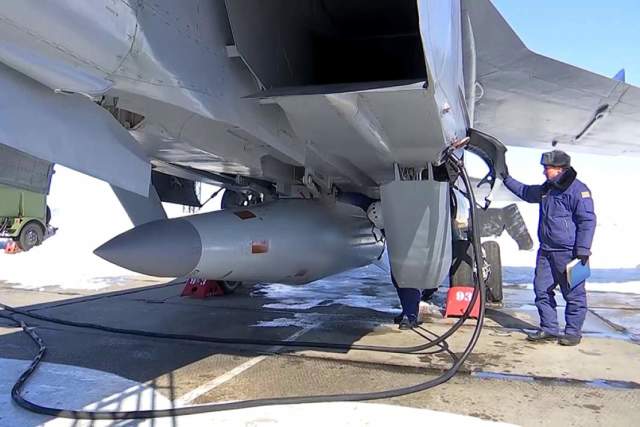
Hypersonic Kinzhal missile under the fuselage of the MiG-31 fighter of the Russian Aerospace Forces
Image source: Photo: RIA Novosti/Ministry of Defense of the Russian Federation
The Dagger is capable of hitting command centers (including underground ones), air bases, air defense and missile defense systems, as well as other important enemy facilities, military experts explained to Izvestia.
"Also, the Zircon naval hypersonic strike complex has already been used in combat, which was not even mentioned in the 2018 message, but this system is already in service," Vladimir Putin noted.
This missile is capable of maneuvering not only vertically, but also horizontally, which makes it difficult to detect and defeat it. The estimated flight range of the Zircon is 1 thousand km, it is capable of moving at a speed equal to nine speeds of sound.
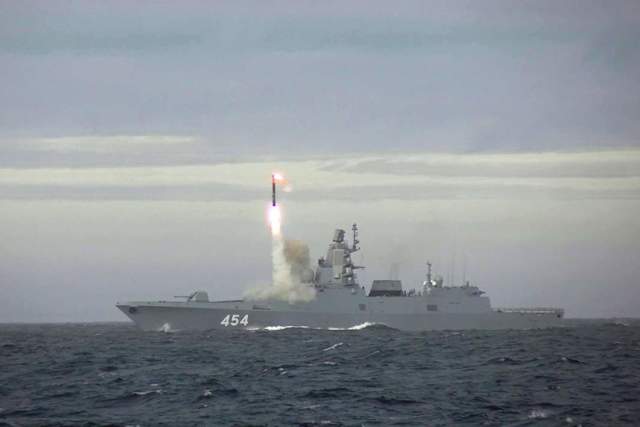
Launch of a hypersonic cruise missile "Zircon" at a naval target position located in the White Sea from the lead frigate of Project 22350 "Admiral of the Fleet of the Soviet Union Gorshkov" from the Barents Sea
Image source: Photo: RIA Novosti/Ministry of Defense of the Russian Federation
In early February, foreign media reported on the first combat use of the Zircon. However, there was no official confirmation from the Russian side.
In December last year, in Severodvinsk, the commander of the frigate Admiral Kasatonov told Vladimir Putin, who was inspecting the ship, that the modernization for Zircons had been completed, four combat missiles had been loaded.
"The first serial Sarmat heavy ballistic missiles have also been delivered to the troops. We will soon demonstrate them in the areas of deployment on combat duty," Vladimir Putin promised.
The first successful launch of the Sarmat from the Plesetsk cosmodrome was carried out on April 20, 2022. This missile carries 10 Avangard guided warheads, the power of each warhead is 750 kilotons. For comparison, the power of the atomic bomb "Kid", which the Americans dropped on Hiroshima, was about 18 kilotons.
"Avangard intercontinental range hypersonic units and Peresvet laser systems are on combat duty," the Russian president also said.
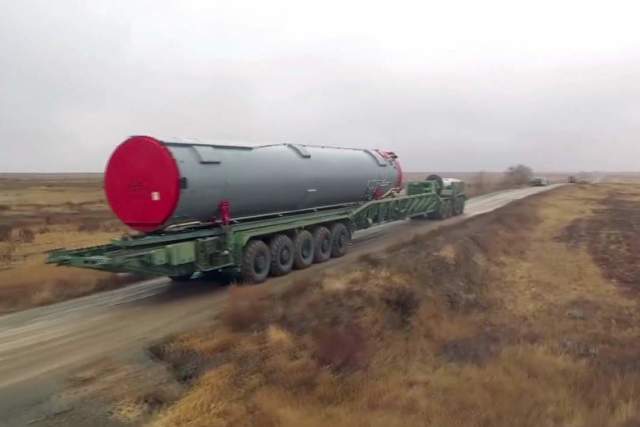
An intercontinental ballistic missile of the Avangard strategic missile system before being installed in a launch shaft in the Orenburg region
Image source: Photo: RIA Novosti/Ministry of Defense of the Russian Federation
The main feature of the Avangard is the flight speed, reaching 33-37 thousand km/h. The weapon was created to overcome the enemy's missile defense. He was put on combat duty in 2019. In November 2022, the Strategic Missile Forces units stationed in the Orenburg Region began to be re-equipped with the latest missile system.
The Peresvet laser complex is considered one of the most closed developments. Not only its characteristics are unknown, but also the principle of operation. In 2022, at that time, the Deputy Prime Minister in charge of the military-industrial complex, Yuri Borisov, said that Peresvet was already being mass-supplied to the Russian armed forces, it could disable satellites in orbits up to 1.5 thousand km high.
Military experts interviewed by Izvestia stated the speed of implementation of the latest developments.
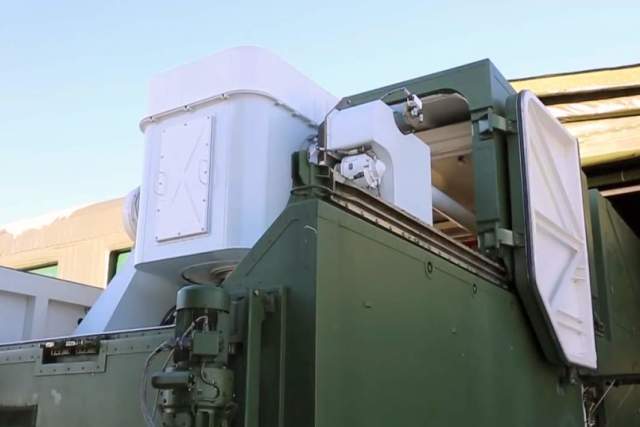
Deployment and preparation for the use of the combat laser complex "Peresvet"
Image source: Photo: RIA Novosti/Ministry of Defense of the Russian Federation
— The Dagger is already in service with Russian aviation, it is used during its military operation, — Dmitry Kornev, editor of the Militaryrussia portal, told Izvestia. — The Zircon enters service with the Navy. For surface ships, it has already passed state tests and is part of the armament of frigates of project 22350. State tests will probably be completed on submarines in the near future. Two regiments of Avangard complexes with hypersonic aeroballistic combat equipment are already on combat duty. The Peresvet laser complex is already on experienced combat duty in those parts where there are mobile Yars ground complexes. "Sarmat" enters the parts of the Strategic Missile Forces. Its tests have not yet been completed, apparently, several more launches will be made. But the Sarmatians have already been put on combat duty and will probably be placed in mine launchers. They will take the place of the Voivode missiles.
Such systems solve the tasks of strategic deterrence and in case of obvious aggression they are used without restrictions, Admiral Viktor Chirkov, ex-commander-in-chief of the Navy, told Izvestia.
— We need to move faster to a new fifth-generation weapon. Both civil and military science will be aimed at this," the admiral said. — Special attention should be paid to monitoring the implementation of promising developments.
In the final stage
Addressing the Federal Assembly, Putin also said that tests of the Burevestnik cruise missile of unlimited range and the Poseidon unmanned underwater vehicle were being completed.
"These systems have confirmed their high unique characteristics," he said.
According to the Russian Defense Ministry, the Burevestnik began to be tested in 2018, and in 2019, the Poseidon also passed sea range tests.
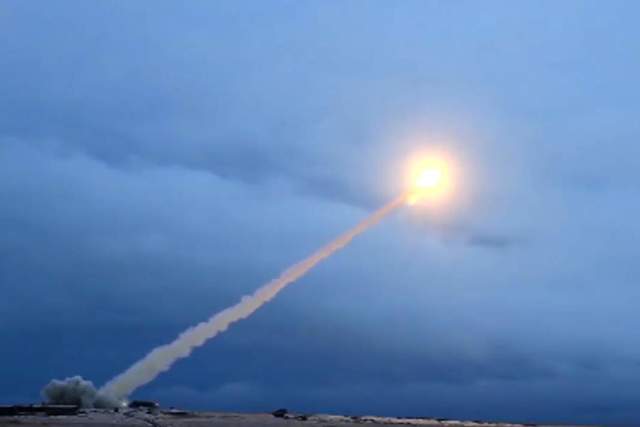
Tests of the Burevestnik nuclear-powered cruise missile
Image source: Photo: RIA Novosti/Ministry of Defense of the Russian Federation
— The tests are continuing, when they will be completed, it is still a question, — Dmitry Kornev explained. — These are very complex and unique systems, no one in the world has such, we have an absolute priority here. The problem is that creating these systems is a difficult and financially demanding task. But work on these projects continues, because our strategic tomorrow depends on it.
The expert noted that Daggers and Zircons in non-nuclear equipment can be used in a special military operation. And everything else is nuclear deterrence systems.
"We can defend ourselves from Ukraine and other states of this kind with strikes from non—nuclear systems," he explained. — And Russia is protected from the possibility of an attack by any other powers, including nuclear ones, by a nuclear umbrella of these latest systems, to which the Burevestnik and Poseidon will be added in the next few years.
In full readiness
Vladimir Putin, speaking about the strategic nuclear forces, said that they "are in a state of full combat readiness for guaranteed use."
A little earlier, on February 2, the head of state stated that the country's strategic nuclear forces had been updated by 95%, and their marine component by almost 100%.
The Strategic Nuclear forces include three components. The marine component is represented by the latest submarine strategic cruisers of the project 955 "Borey" and 955A "Borey-A". They carry Bulava intercontinental ballistic missiles on board.
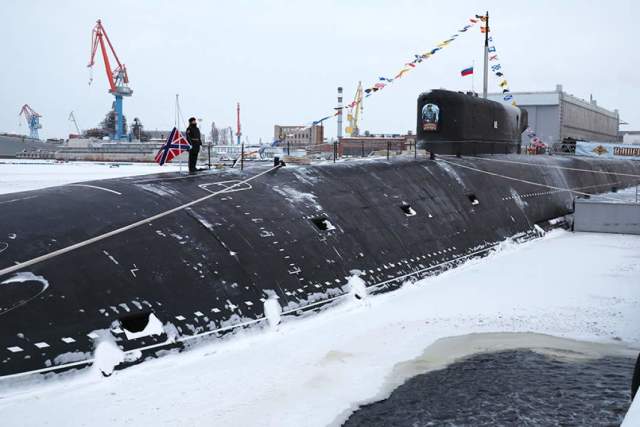
The nuclear submarine "Emperor Alexander III" of project 955A "Borey-A" during the solemn ceremony of raising the naval flag at JSC "PO "Sevmash" in Severodvinsk
Image source: Photo: RIA Novosti/Mikhail Klimentyev
Strategic missile forces represent the ground component. The basis of their grouping is the mobile soil complexes RS-24 "Yars". The Yarsa missile carries six low-power warheads. The complex is equipped with a modern control system, which provides it with the highest accuracy and the possibility of using high-speed flooring trajectories.
The air component is based on strategic supersonic Tu-160 bombers. This is the largest supersonic aircraft with variable wing geometry in the history of military aviation, having the largest maximum take-off weight among bombers.
Izvestia's help
Earlier, summing up the results of 2023, Defense Minister Sergei Shoigu said that many enterprises had commissioned new workshops, lines, and sections equipped with high-tech equipment.
The military-industrial complex of the Russian Federation has fulfilled the plan to supply new equipment to Russian troops by 98.8%.
In 2023, the Russian army received more than 100 new and refurbished aircraft, 150 helicopters, 3.5 thousand drones, and the fleet received over 7.7 thousand units of weapons, including long-range sea-based cruise missiles "Zircon", "Caliber" and "Uranus".
Roman Kretsul
Julia Leonova
